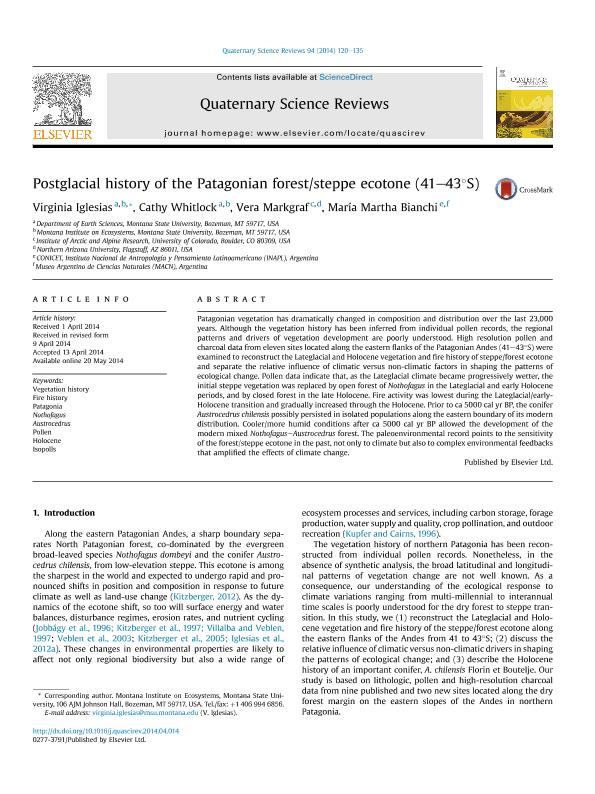Artículo
Postglacial history of the Patagonian forest/steppe ecotone (41–43°S)
Fecha de publicación:
10/2014
Editorial:
Pergamon-Elsevier Science Ltd.
Revista:
Quaternary Science Reviews
ISSN:
0277-3791
Idioma:
Inglés
Tipo de recurso:
Artículo publicado
Clasificación temática:
Resumen
Patagonian vegetation has dramatically changed in composition and distribution over the last 23,000 years. Although the vegetation history has been inferred from individual pollen records, the regional patterns and drivers of vegetation development are poorly understood. High resolution pollen and charcoal data from eleven sites located along the eastern flanks of the Patagonian Andes (41–43°S) were examined to reconstruct the Lateglacial and Holocene vegetation and fire history of steppe/forest ecotone and separate the relative influence of climatic versus non-climatic factors in shaping the patterns of ecological change. Pollen data indicate that, as the Lateglacial climate became progressively wetter, the initial steppe vegetation was replaced by open forest of Nothofagus in the Lateglacial and early Holocene periods, and by closed forest in the late Holocene. Fire activity was lowest during the Lateglacial/early-Holocene transition and gradually increased through the Holocene. Prior to ca 5000 cal yr BP, the conifer Austrocedrus chilensis possibly persisted in isolated populations along the eastern boundary of its modern distribution. Cooler/more humid conditions after ca 5000 cal yr BP allowed the development of the modern mixed Nothofagus–Austrocedrus forest. The paleoenvironmental record points to the sensitivity of the forest/steppe ecotone in the past, not only to climate but also to complex environmental feedbacks that amplified the effects of climate change.
Archivos asociados
Licencia
Identificadores
Colecciones
Articulos(SEDE CENTRAL)
Articulos de SEDE CENTRAL
Articulos de SEDE CENTRAL
Citación
Iglesias, Virginia; Whitlock, Cathy; Markgraf, Vera; Bianchi, Maria Martha; Postglacial history of the Patagonian forest/steppe ecotone (41–43°S); Pergamon-Elsevier Science Ltd.; Quaternary Science Reviews; 94; 10-2014; 120-135
Compartir
Altmétricas




